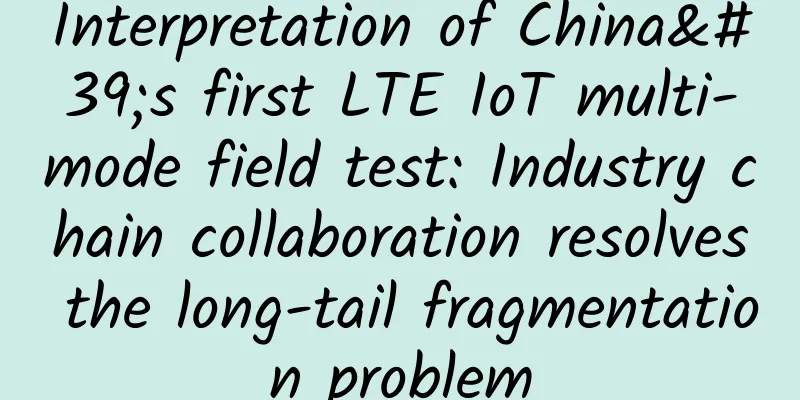5G sets new standards for IoT connectivity in vertical industries

|
As 5G rolls out around the world, verticals across the IoT are developing additional standards to make the technology fit their industries. Manfred Lindacher, Vice President of Global Sales for the International Automotive Market at Quectel Wireless Solutions, explains why industries are racing to adopt specific industry standards for 5G that supports IoT. Looking across the IoT landscape, it is clear that vertical industries are currently defining additional standards, exceptions, and use cases to make 5G appropriate and compliant for their industry use. IoT capabilities enabled by low-latency, high-bandwidth 5G are transforming traditional business practices and processes, but in sensitive industries such as healthcare, compliance with industry-specific regulations and secure interoperability are imperative. For example, in the automotive market, standardization is being carried out by the 5G Automotive Association, which is supported by automakers, Tier 1 automotive suppliers, chip manufacturers, and infrastructure companies. In addition, mobile network operators and modem manufacturers are also supporting this work, contributing their expertise based on automotive use cases. The focus is not only on 5G technology, but also on the Cellular V2X (C-V2X) standard, which is mainly related to automobiles. The deployment of 5G is underway in an increasing number of markets around the world, which will undoubtedly make the decision to choose the technology easier. This is important because 5G is not the only technology available. Organizations can choose from connectivity options, including LTE Advanced and GNSS solutions, which can provide many (but not all) of the attributes of 5G. The lack of universal coverage, coupled with a lack of clarity, has led to delays in the development of industry-specific standards, which in turn will slow the adoption of 5G for IoT applications. It’s not just the standards process in individual industries that is causing the delays. From a technical perspective, the cellular standards themselves are becoming more demanding to implement as mobile generations advance. If we look back at the 2G standard, antennas had to support (depending on the geographic market) two frequency bands, 900 megahertz (MHz) and 1800MHz or 850MHz and 1900MHz. With 5G, we are now talking about several bands of spectrum below 6 GHz, which may be expanded when organizations start using millimeter wave technology for fixed use. . It’s becoming increasingly clear. China has made clear statements on automotive industry standardization, so there is no doubt that China will participate in C-V2X technology, but if you look at other large markets, the situation is different. In the United States, DSRC still reserves spectrum, while the European Union issued clear recommendations on C-V2X before changing its position to neutral the next day. Therefore, due to the uncertainty of the adoption of standards in various markets, it is difficult for the entire automotive industry to make long-term decisions. The need for technology certainty is multi-layered and varies across industries, depending on whether services and devices are deployed globally or if they are expected to have a long deployment lifecycle. Cars operate for 10-20 years, smart meters may be used for more than 20 years, while other devices are expected to operate for only a few years. This increases the risk that decision makers will choose a technology that will not be relevant in a decade. Therefore, organizations are looking to standardization to provide a reliable roadmap against which they can determine the likely lifecycle of a technology and understand its suitability for their IoT use cases. For example, advanced driver assistance systems (ADAS) above Level 4, where the car completely takes over control and the driver is “absent-minded,” require large amounts of real-time data. For these robot cars, enabling such applications urgently requires not only more bandwidth, but more importantly, 5G’s low latency. The market recognizes this, so organizations such as the 5G Automotive Association and their members are focusing on 5G. There is an IoT ecosystem around the connected car that can be leveraged across many different vehicles, and there is huge potential here. From our experience in other verticals and IoT, we know that IoT pioneers really value hands-on support to develop their IoT devices and deployment strategies. For many, 5G is a new and complex technology that presents unique requirements for a wider range of IoT solutions. Therefore, it is imperative that 5G-enabled smart devices are carefully designed and developed so that we can provide experiences across verticals and other wireless technologies to help simplify and accelerate development for our customers. The success of automotive IoT requires the best support from the IoT ecosystem from chipset vendors, connectivity providers, application developers and component suppliers. The reality is that only large companies have the necessary scale and global presence to support an industry like automotive where millions of connected products are shipped every year. |
<<: Understanding HTTP and TCP protocols from an HTTP request
>>: IPv6 brings huge opportunities for managed service providers
Recommend
How are 5G charges calculated: This is what the operators say. Are you willing to pay more?
An operator insider confirmed to IT Times, "...
The number of 5G package customers has exceeded 165 million. China Mobile announced its operating data for December 2020.
Since the Ministry of Industry and Information Te...
Read this article only three times and you will never forget network layering!
This article is reprinted from the WeChat public ...
The United States announced the development of a quantum internet, claiming it can never be hijacked
[[334868]] Image: Chicago Mayor Lori Lightfoot an...
Huawei Cloud and Microsoft Enterprise Applications kick off a new journey of strategic cooperation
On September 5, 2017, during HUAWEI CONNECT 2017,...
VMISS newly launched Korean VPS with 30% discount, 1G memory package starts from 3.5 Canadian dollars (≈ RMB 18) per month
In May this year, we shared information about VMI...
RackNerd: $16.5/year KVM-1.5GB/20GB/3TB/Los Angeles MC Data Center
A few days ago, I shared a list of LETs, and Rack...
How does user-mode Tcpdump capture kernel network packets?
[[422515]] This article is reprinted from the WeC...
The first "government cloud" platform in our province was launched in Xinzhou
Recently, with the "Xinzhou Public Trading P...
Why 5G networks require a new way of operating
In the 5G reality, network operations are moving ...
How to protect data in an increasingly insecure environment?
Protecting data is becoming increasingly difficul...
Wi-Fi 7 Revealed: The Future of Wireless Connectivity Is Here
In the digital age, the pursuit of faster, more r...
What is the value of 5G at the edge?
A lot of people have been questioning the value o...
HostKvm New Year Offer: Hong Kong Cloud 4G Memory Package Annual Payment Discount Only $60/Year
HostKvm is a foreign VPS service provider founded...
China Mobile: More than 390,000 5G base stations will be opened throughout the year to ensure that the quality of 4G network will not decline
Despite the sudden outbreak, this did not stop Ch...









